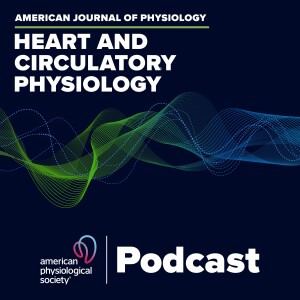
Permeability is an important measure of the exchange function of microvessels, but until now, there has been a lack of physiologically-relevant in vitro microvessel models that allow an easy assessment of permeability properties of the microvessel wall. In our latest episode, Associate Editor Amanda LeBlanc (University of Louisville) interviews lead author Ping He (Penn State University) and expert Robert Hester (University of Mississippi Medical Center) about the latest research study by Gao et al., published in the AJP-Heart and Circ Call for Papers on Deconstructing Organs: Single-Cell Analyses, Decellularized Organs, Organoids, and Organ-on-a-Chip Models. Dr. He and colleagues developed a novel microvessel-on-a-chip model which allows endothelial cells to grow under continuous flow, simulating the in vivo environment, while also allowing for the assessment barrier function of the microvessel wall. The in vitro microvessel model Gao et al. developed features layers of glycocalyx and endothelium, and as Dr. He points out, endothelial junctions and glycocalyx are key components contributing to microvessel barrier function and acute inflammatory responses observed in in vivo models. Listen as we discuss the future directions of this model in both acute and chronic conditions, disease states and future molecular studies.
Feng Gao, Haoyu Sun, Xiang Li, Pingnian He Leveraging avidin/biotin interaction to quantify permeability of microvessels-on-a-chip Am J Physiol Heart Circ Physiol, published December 13, 2021.
DOI: 10.1152/ajpheart.00478.2021
More Episodes
 2014-09-15
2014-09-15
 217
217
 2014-08-19
2014-08-19
 220
220
 2014-07-25
2014-07-25
 280
280
 2014-07-23
2014-07-23
 261
261
 2014-07-16
2014-07-16
 227
227
 2014-06-19
2014-06-19
 203
203
 2014-06-13
2014-06-13
 215
215
 2014-05-15
2014-05-15
 341
341
 2014-04-24
2014-04-24
 155
155
 2014-03-27
2014-03-27
 188
188
 2013-11-20
2013-11-20
 289
289
Create your
podcast in
minutes
- Full-featured podcast site
- Unlimited storage and bandwidth
- Comprehensive podcast stats
- Distribute to Apple Podcasts, Spotify, and more
- Make money with your podcast
It is Free
- Privacy Policy
- Cookie Policy
- Terms of Use
- Consent Preferences
- Copyright © 2015-2024 Podbean.com





